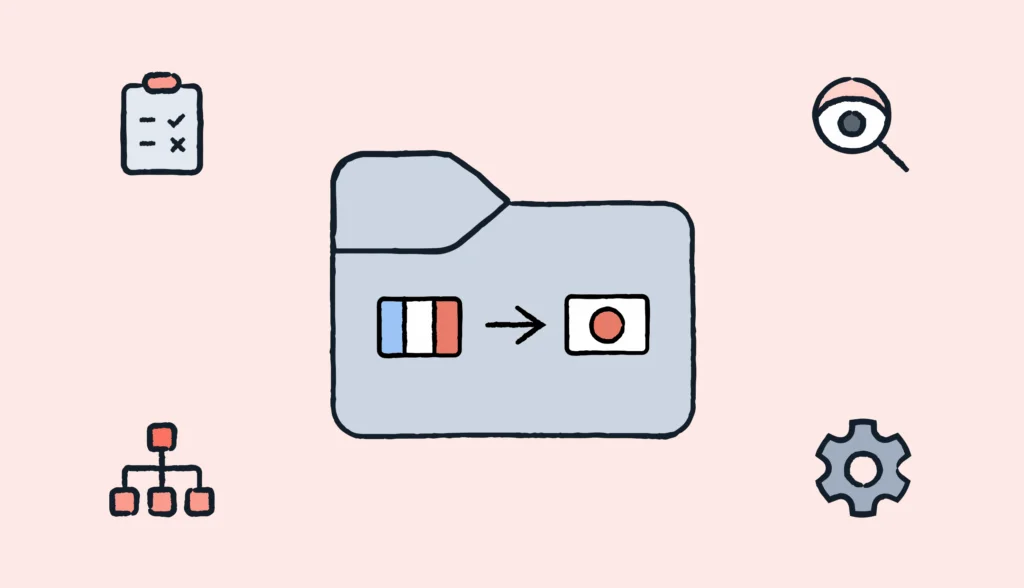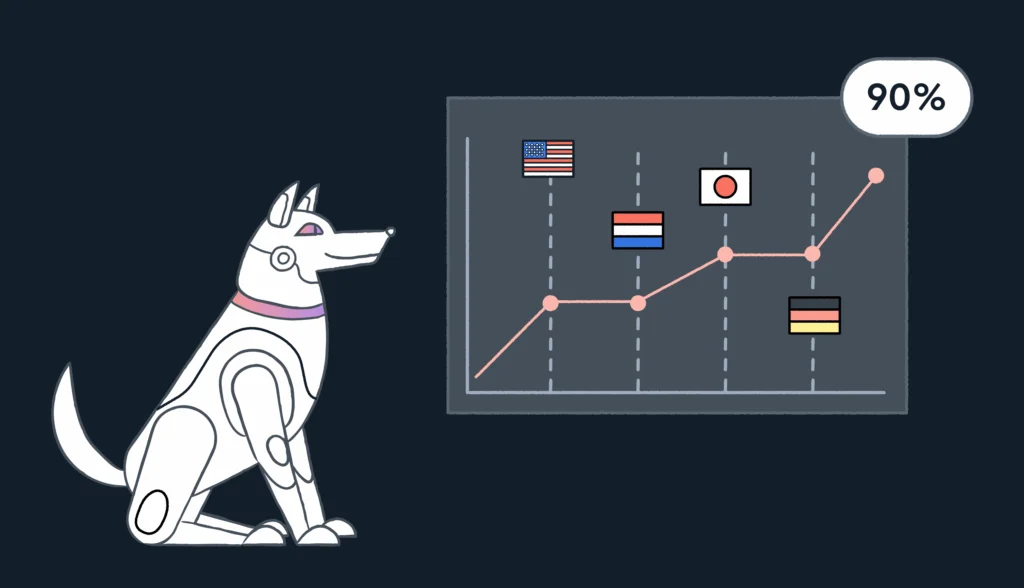If you want to ace your localization projects and open your product to different markets, you need strict organization, monitoring, and checking.
Well-localized content will benefit your business on many levels. Your global visibility will increase, and so will your sales.
Your goal: making sure that your localization strategy is strong and that your product makes sense for your target audience, so you never get lost in translation.
In this article, you will learn what localization management is, how it can benefit your business, what the best practices are and what type of software can help you reach your KPIs.
What is localization management?
Localization management is the organization and optimization of your localization process. This allows you to speak the language of your customers beyond words. You need to consider a long list of elements that make an effective localization. When you are ready to adapt your product to different target markets, having a clear strategy and knowing the different challenges you face can make a difference in the success of your localized product.
Why localization matters for global businesses
Great news! You are planning to launch your product in international markets, and one of the first actions you want to take is localization. In fact, if you postpone this process, it might cause your business more harm than good, because your target audiences could feel misunderstood or neglected. Localization helps you with the global success of your product in different ways:
- Increase in revenue: research shows that Fortune 500 companies who invested in localization were 1.5 times more likely to increase their revenue than their competitors.
- Have a head start on your competitors: You need a strong localization team that understands the challenges they face to suggest the best strategies for your business specifically.
- Build trust with your audience: an audience that relates to your product is more likely to buy and create loyal and repetitive purchasing behaviors.
🧠Did you know?
Roughly 1.5 billion people speak English worldwide, which is around 20% of the world population. Assuming it is the “universal language” keeps you away from 80% of the population, or 6.5 billion people. Not so universal, after all.
The key benefits of strong localization management
Following a clear direction and understanding of how to handle your product localization is necessary to see the benefits applied to your product. Software programs and tools can help you achieve that.
Save time and money
Working from a platform that centralizes your content helps you save precious time. Once the files to be localized are ready and uploaded, the software automatically assigns the languages to the different stakeholders in the process.
Also, some translation tools include a first round of machine translation to speed up the process and to reduce translation costs, as the experts work on reviewing rather than translating from scratch.
Better content quality
Specific terminology is used throughout your content, and the localization experts need to provide a consistent translation to ensure regularity. This aspect is important to speak to your audience with professionalism and a tone of voice that is identical from A to Z. It is essential to provide them with materials that help them maintain this consistency, such as localization glossary.
Better visibility on performances
Working with the help of a localization platform is great for keeping an eye on the progression of your project. You have access to each language and see its completion percentage. You can also answer the translators’ questions and comments directly from there. Plus, you can see how your team performs and whether they pass the localization quality assurance (QA) checks.
There are more benefits of strong localization management, such as better productivity and communication between the different teams involved in the process. Knowing what you need, who can help you and how, and working together on the right software is your recipe to successful localization.
Localization vs Internationalization
The two terms are often used interchangeably, even though they have different meanings.
| Process | Explanation | Examples |
| Internationalization | Preparing a product for localization, and making sure that it will be easily adapted into different languages. | Creating code strings that allow format variations (time, number, date…) |
| Localization | Translating content into a new language, considering the cultural aspects of specific regions/dialects… | Changing the name of locations, public figures, jokes, etc. according to a specific market |
In short, internationalization comes before localization, and allows for a reduction in time and cost when done correctly.
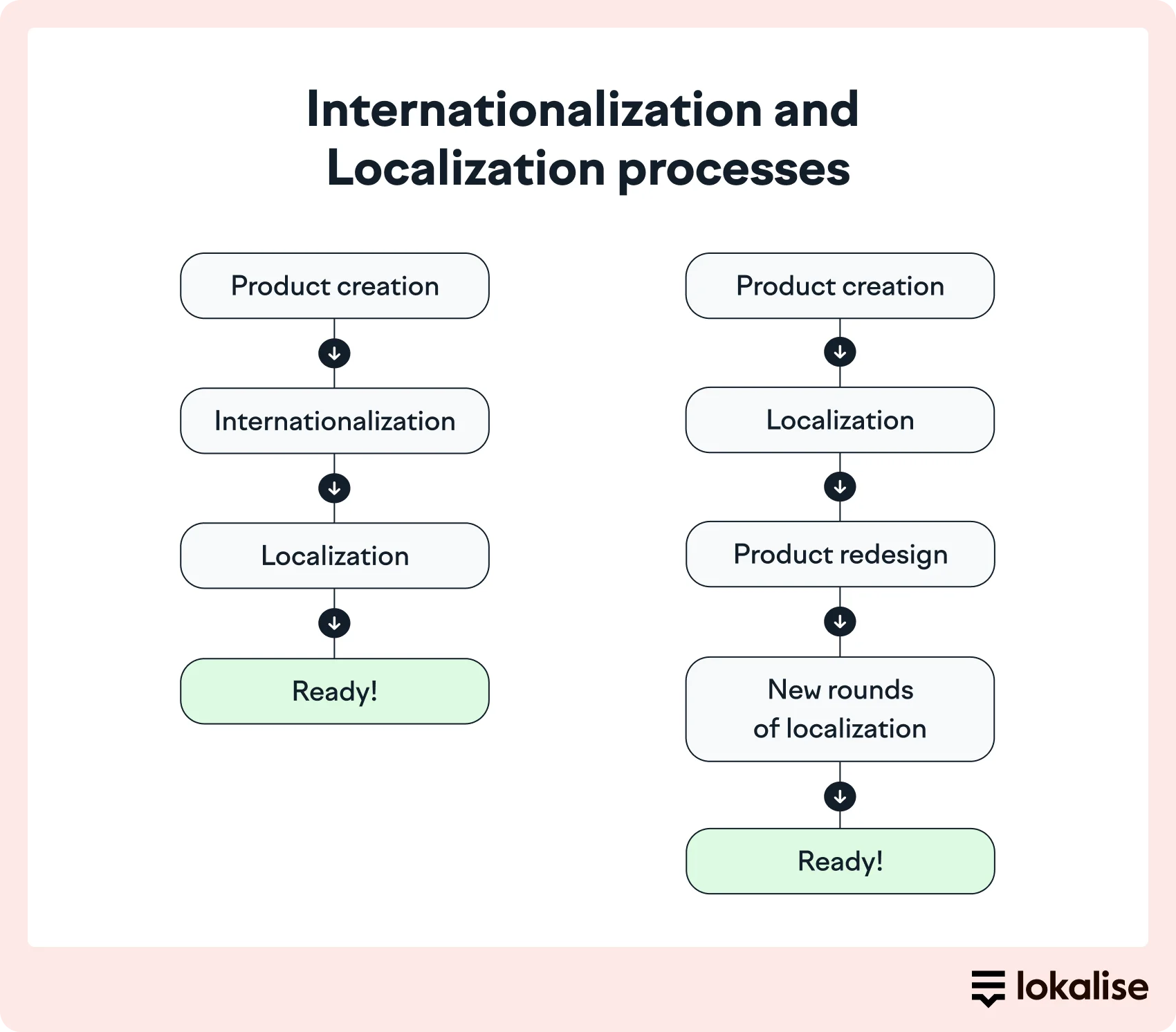
Main challenges in localization management
Localization management is an effective solution that grants multiple benefits to your business, but it comes with a set of challenges your project managers need to overcome. Without a clear strategy on how to tackle those challenges, the process can result in time, budget and performance issues.
| Challenges | Examples of solutions |
| Poor communication | Centralizing all the parties involved in one messaging platform |
| Staying within budget | Sharing the tone of voice of your brandRun localizability tests early |
| System inefficiency | Using a synchronized CMS to improve the localization workflow management |
Managing a project end to end must be simple and centralized. Collaborative software can help you avoid the hassle of juggling multiple spreadsheets and messaging platforms by streamlining tasks like localization testing, ensuring a seamless workflow that increases productivity and decreases costs.
What is localization management software?
Localization management software is a tool that helps you manage your localization project. It includes different features that make the process easier for all the parties involved.
- Machine translation (MT): artificial intelligence (AI) is used to translate content automatically. It speeds up the process, but it is always recommended to ask a professional human translator to review the initial translation.
- Translation memory (TM): a database of content that has already been localized by experts.
- Term base, or localization glossary: a list of terms that must be used by translators. Vocabulary can be added, deleted and edited in a term base
- Project management features: helps all the parties to keep track of the progression of a project. Stakeholders can share comments, questions and concerns. Project managers can assign tasks, and developers can try the available localizations.
Localization management platforms offer you many features that make the localization process seamless. Finding the software that best suits you and your team’s needs the most is key to enjoying all the benefits of localizing your product.
Best practices for managing localization projects
When hiring a project manager or a language service provider (LSP), you need to make sure that they understand how to approach your needs and what practices ensure the optimal delivery of your project:
Internationalization is complete and effective
Localization must be at the heart of your content when you design it for your website or your application. Making sure that you have internationalized your product correctly makes the localization process seamless for all the parties involved. You save time by having content that is ready to be implemented and that does not need other rounds of redesign.
Communication is key
Your team must know your product. They must know the TOV of your brand, where the content they localize is displayed online, how creative they can be, etc. Allow your linguists to ask questions through a query sheet, and provide them with extra materials that help them understand the essence of your product.
Use the right software
Using the right software for your expectations and needs helps you save time and money. From the briefing phase to the final delivery phase, the platform you choose to work on must make your actions smoother, not harder. Everything must be found in one place, at a glance, by everyone. Give people the right roles on the platform to make their work easier, too.
Test the existing localization
Do not wait for final delivery to check if the localized content works just fine on your application/website. Are the different formats displaying correctly (date, time, measurement units…)? Are hyperlinks working? If you have feedback for your team of experts, they are able to edit the content they work on, which makes everyone save time down the line.
If you or your project manager focus on making the workflow more efficient for all the parties involved in the localization process, the quality of the final localized product will be better.
How did companies manage their localization?
Some brands used solid strategies that helped them achieve excellent localization, or bad press. Let’s discover the secret of their success (or not!):
Coca-Cola’s “share a coke” campaign

First launched in Sydney in 2011, the “share a coke” campaign was such a success that it was expanded to 80 countries. People could look for names they would identify with on cans and bottles, and share them with their loved ones.
Each country has its own popular names, and some relate more to communities than first names. In France, names like “Marie” or “Jean” are found on Coca-Cola’s products, and in China, people find terms such as “BFF” or “Classmate”.
The localization team at Coca-Cola understood that what works is making the audience look for the label they relate most to, and that this is not a universal experience.
Monzo’s UK 2023 year rewind
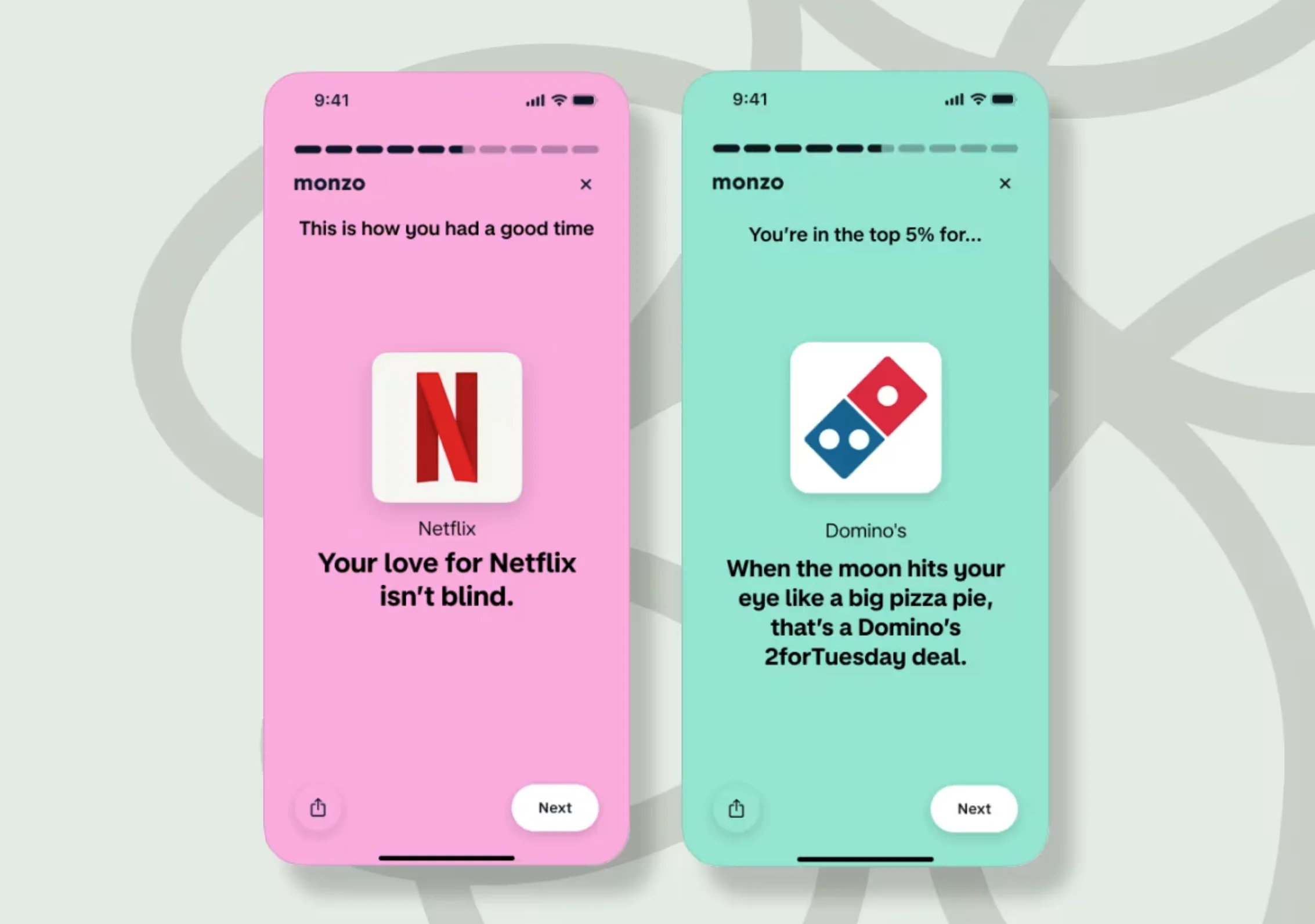
Monzo decided to go local for their 2023 end of the year campaign. Focusing on their users’ tastes, they created ad copy such as “Well done Milton Keynes: you went to Nando’s more than anywhere else in the UK”. For the non-Brit audience, this does not sound familiar. But this is why Monzo’s campaign is so brilliant. Mentioning addresses that locals recognize is an effective way to make an impression in a targeted location.
Nintendo’s Pokémon localization fail
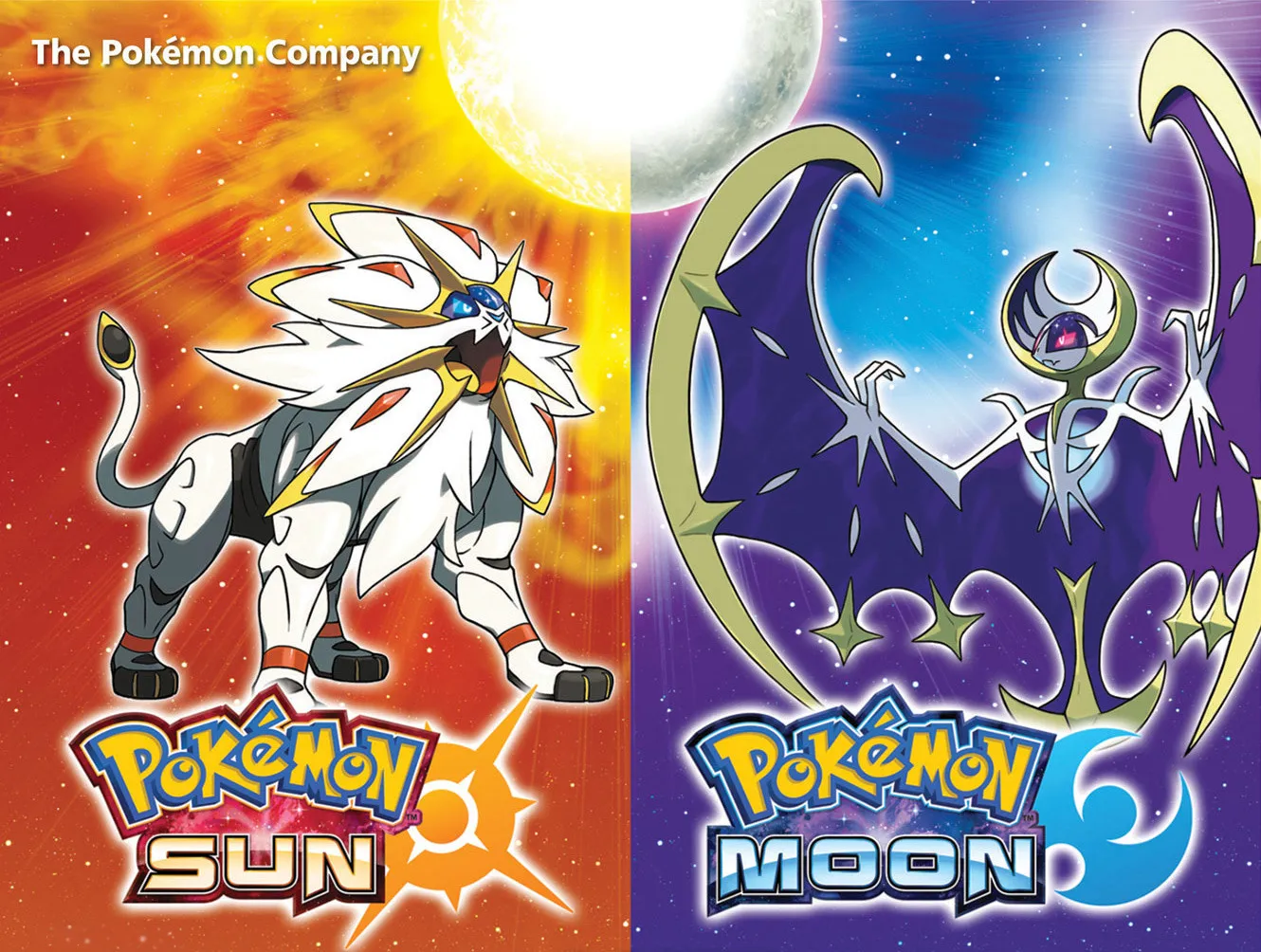
In 2016, Nintendo released Pokémon Sun and Moon in Chinese only to target the Chinese, Hongkonger and Taiwanese markets. The problem? Hong Kong fans were very unhappy with the game, in particular with its localization. Even though the three markets speak Chinese, they use different dialects, and some terms used in the game would not make any sense for the Hong Kong community. The localization team at Nintendo ignored the cultural nuances between the markets and thought that a “one-size-fits-all” Chinese localization would be accepted by the community.
💡 Fun fact
Nintendo was also appreciated for the highly thoughtful and precise localization of other titles such as Animal Crossing, that takes into consideration the sense of humor and culture of the communities from different markets to make them feel included and immersed in their games.
How Lokalise does localization management
When it comes to localization management, Lokalise understands how to make the process fast, intuitive and automated for you, because your precious time cannot be wasted repeating small tasks hundreds of times.
AI can help you save up to 70% in cost while maintaining 100% quality. Build a style guide to give AI the context it needs, get the specific terminology reviewed by human linguistic experts, and translate in bulk into more than 30 languages in one go.
You also have access to automated workflow templates inside Lokalise that you can choose and customize. That way, your localization projects become more autonomous while remaining as efficient! You can add translation memory and machine translation to your workflow in a few clicks to sharpen the localization process and make it tick all the boxes.
Improve your team collaboration, scale your localization processes, and step in only when needed to reduce your localization workload.


